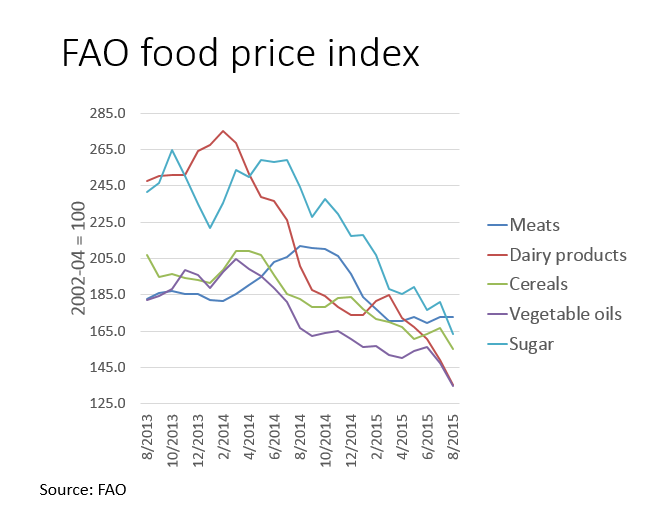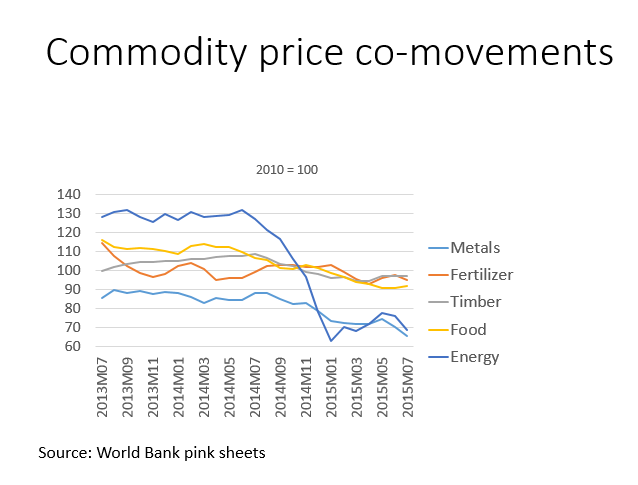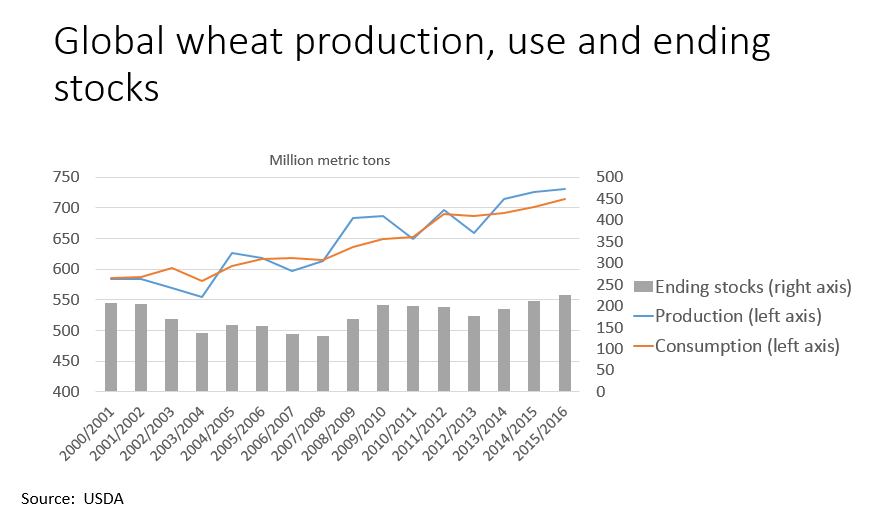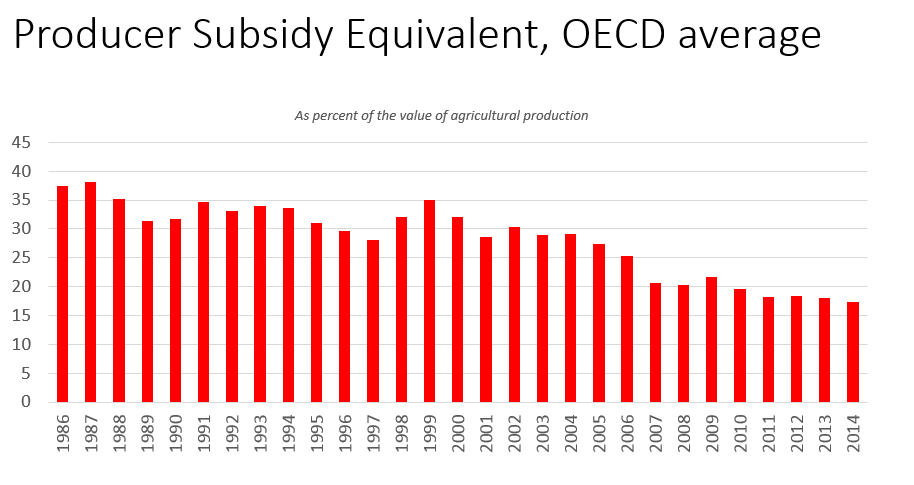
The Food and Agricultural Organization reports that food prices for August fell 5.2 percent from July levels and down 21.5 percent from last August. The FAO Food Price Index is at the lowest level since April 2009 and down 35 percent from its recent peak in February 2011. Compared to a year ago, prices for cereals, meats, and vegetable oils are down between 15 and 20 percent, while prices for sugar and dairy products are down by about a third.
As discussed in previous posts , prices for grains and oilseeds have responded to the record global production levels since 2012. In the most recent projections from the USDA, released September 9, world wheat production is forecast to reach a record 732 million tons, outstripping consumption in 2015/2016 by almost 16 million tons. As a result, ending stocks are estimated at a record 227 million tons. Expressed as days of use, the stocks represent 116 days of use, the highest level since 2001 and up significantly from stock levels in 2007/2008 when they represented a tight 76 days of use. Corn and soybeans have seen similar record production trends.
The fall in agricultural prices mirrors declines in other commodity markets as well. Energy prices, fertilizer prices, and metal prices have all moved lower over the last eighteen months as supplies have been more than ample to meet demand. Weaker than expected demand-growth in the global economy, particularly in China and India, has contributed to rising inventories in energy and metals markets and lower prices. Lower fertilizer and energy prices have helped mitigate the impact of lower crop and livestock prices on farm returns, particularly for the more energy- and fertilizer-intensive crops.
Over the past few years, much concern has been expressed over high and volatile agricultural prices. So are lower prices a good thing for the world? Lower food prices means that households will have more money to spend on food and other household expenditures. However, the impact for many will likely be small. In developed countries, commodity prices typically account for a small part of the price a consumer pays for a grocery item. In the United States, for example, the farm gate value accounts for less than 15 percent of the total consumer food bill, on average. In many developing countries, research suggests that consumers are often insulated from world prices .
Moreover, lower crop and livestock prices mean lower income for rural households dependent on agriculture. Research by IFPRI’s Will Martin and colleagues at the World Bank has shown that since many rural households are net buyers of staple foods, lower commodity prices means those households may be better off in the short run. Over the long run, however, lower prices tend to discourage production, leading to lower farm household income and to lower the wages for unskilled workers. As a result, sustained lower food prices can increase global poverty.
Lastly, lower global prices renew concerns over production- and trade-distorting domestic support. Such policies insulate producers from market prices, which can result in commodity surpluses, which in turn can actually prolong adjustments and a return to higher prices. While much progress has been made through the WTO in reforming agricultural policies, distortionary agricultural policies remain in many developed countries and, more recently, in some emerging developing countries. The upcoming WTO Ministerial in Nairobi presents an important opportunity to make further progress in disciplining and limiting those measures.
Source: OECD
Joseph Glauber is a Senior Research Fellow at the International Food Policy Research Institute (IFPRI) in Washington, DC. Prior to joining IFPRI, Glauber served as Chief Economist for the U.S. Department of Agriculture, where he was responsible for the Department’s agricultural forecasts and projections, oversaw climate, energy and regulatory issues, and served as Chairman of the Board of Directors of the Federal Crop Insurance Corporation.
Files:



